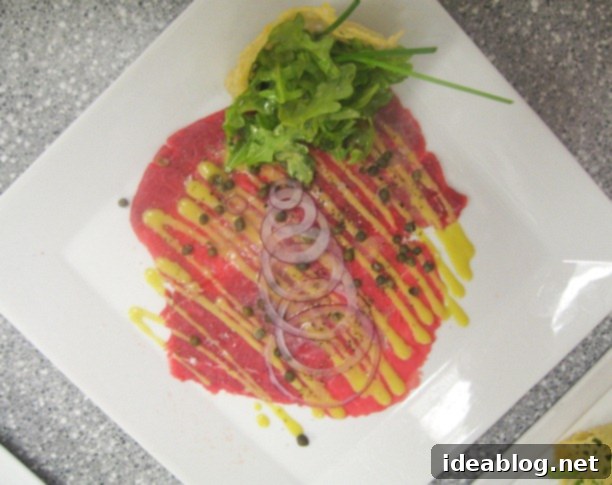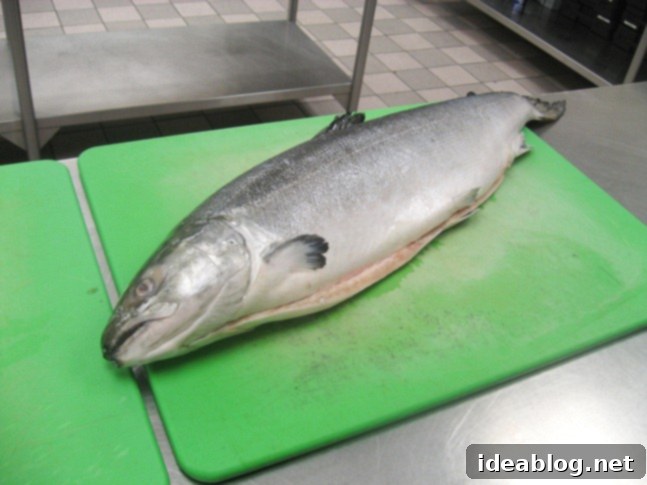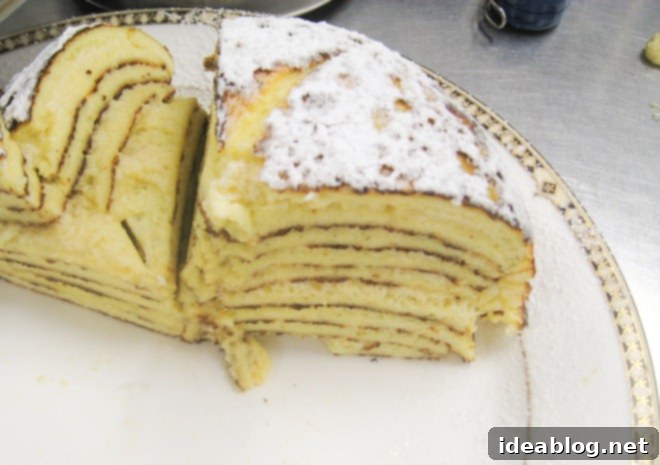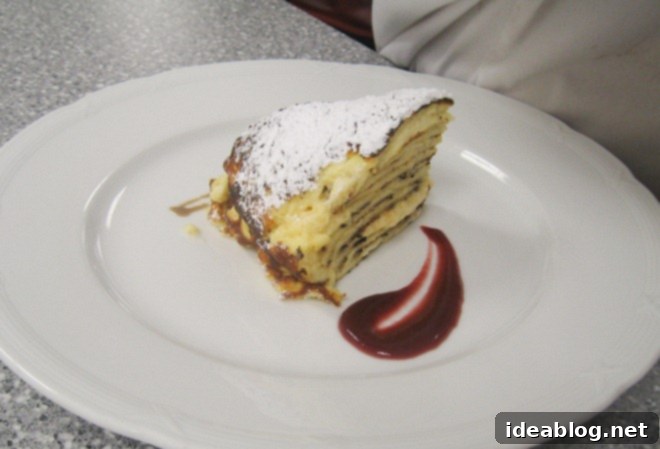Culinary School Chronicles: Mastering Gourmet Dishes and Professional Techniques in Our Final Month
Today marked a pivotal milestone in our culinary school journey – our 21st week! This also signified the thrilling, yet slightly daunting, commencement of our last month at L’Academie. With this new phase, came exciting changes: new partners, new workstations, and a fresh daily rotation of innovative dishes to master. I’m now paired with Kevin, and together, we’re ready to tackle the advanced challenges that await us.
The final month at culinary school is an intense period, demanding an even sharper focus on critical aspects like speed, kitchen efficiency, and the meticulous fine-tuning of our culinary skills. This intensive preparation is crucial before we embark on our externships in demanding professional restaurant kitchens, stepping into the exhilarating (and slightly intimidating) real world of professional cooking. Rest assured, I’ll be dedicating an entire post to the externship experience within the coming week, detailing the challenges and learning opportunities it presents, so stay tuned!

Our day kicked off with the sophisticated preparation of beef carpaccio. This classic Italian appetizer features impeccably thin slices of raw beef tenderloin, meticulously pounded to an almost translucent texture. The dish was elegantly served with a vibrant Dijon dressing, briny capers, thinly sliced red onions, and a fresh arugula salad nestled within a delicate Parmesan tuile. For those unfamiliar with this exquisite starter, the key lies in the quality of the raw beef and the harmony of accompanying acidic and salty elements. These components, such as the capers and dressing, are essential for balancing the rich, strong flavors of the raw beef, creating a perfectly rounded and refreshing experience. While perhaps not my absolute favorite dish in the world, the execution today was undeniably impressive and offered a valuable lesson in delicate flavor profiles.
Working with raw beef demands extreme precision, particularly regarding temperature control and preventing oxidation. To maintain its pristine quality, the beef needed to be served very cold. We meticulously pounded each portion ahead of service, carefully layering them between sheets of plastic wrap, and storing them in the refrigerator until the very last minute. This attention to detail ensured the meat remained fresh, vibrant, and prevented any undesirable browning, which is paramount for the presentation and safety of a dish like carpaccio. It’s a perfect example of how foundational culinary techniques extend beyond just cooking ingredients, emphasizing proper handling and preservation.

For our main course, we focused on precision cooking with a perfectly seared salmon fillet. This was accompanied by a unique cucumber cream sauce, a testament to intricate French sauce-making techniques. The sauce began by gently sweating finely diced shallots and mushrooms, building a foundational aromatic base. This was followed by a careful reduction of rich fumet – a concentrated fish stock – to intensify the flavor. Cream was then incorporated, bringing a luxurious texture. Finally, the mixture was strained for a silky-smooth consistency, and precisely cooked, tourneed cucumber pieces were added, contributing a fresh, albeit unexpectedly textural, element. While the cream sauce itself was undeniably flavorful and expertly executed, the inclusion of the cooked cucumber proved to be a point of interesting discussion among us students. We generally found the texture of the warm, softened cucumber somewhat unconventional in a cream sauce, pushing the boundaries of traditional flavor pairings.

To complement the seared salmon, we prepared a delightful classic German side dish: spaetzle. Essentially, spaetzle are rustic, chewy egg noodles, renowned for their comforting simplicity and versatility. The dough is remarkably straightforward, consisting of a precise mixture of 8 ounces of all-purpose flour, 5 eggs, a pinch of aromatic nutmeg, and a dash of salt. These ingredients are combined and mixed thoroughly in a stand mixer until a smooth, pliable dough forms. The traditional method for shaping spaetzle is quite engaging: we literally pressed the dough against a perforated hotel pan, allowing small, irregular pieces to fall directly into a pot of rapidly boiling water. This unique technique creates those charming, rustic noodle shapes that are characteristic of spaetzle. Once cooked, the noodles were immediately shocked in ice water to halt the cooking process and maintain their al dente texture. Just before service, they were then sautéed in rich butter, developing a beautiful golden hue and enhancing their savory flavor. For me, anything that remotely resembles pasta is an instant favorite, and these homemade spaetzle were certainly a winning accompaniment, showcasing the beauty of simple ingredients transformed through classic techniques.

A significant learning experience earlier in the day involved breaking down the very salmon we used for our main courses. Before class officially began, I had the invaluable opportunity to learn practical fish butchery skills under the expert guidance of Chef Michel. Working with a whole fish, as intimidating as it might initially appear, is a fundamental skill for any aspiring chef. The process involves careful handling and precise knife work, particularly when it comes to efficiently removing the skin and bones without sacrificing too much precious flesh. It’s a delicate balance of force and finesse. While I certainly felt more confident after Chef Michel’s instruction, achieving true proficiency in this area will undoubtedly require considerable practice. It’s a reminder that even seemingly simple tasks in the kitchen demand dedication and repetition to master, contributing significantly to one’s overall culinary repertoire.
Definitely need to practice a lot more to become even remotely good at this complex, yet essential, skill!
And, finally, to conclude our culinary day on a sweet note, we crafted a truly unique dessert: a stunning cake made entirely of crepes. However, this was no ordinary crepe batter. Its distinctive characteristic involved the careful folding in of whipped egg whites, resulting in a batter that produced crepes much thicker and softer, almost akin to delicate pancakes, rather than the traditional thin, pliable crepes. This dish, while seemingly bizarre to describe, demands an exceptional amount of technique, precision, and meticulous attention to detail at every stage of its creation.

Crepe Cake – mid-way through the assembly process, showcasing the delicate layers.
The assembly process itself is a slow, methodical art. Each “crepe” is cooked individually, one at a time, before being meticulously stacked. As each layer is added, it’s delicately sprinkled with sugar, building both sweetness and structure. What truly sets these crepes apart from conventional pancakes, which are flipped and cooked on both sides, is that these were only cooked on one side. Furthermore, they were cooked to an astonishing degree – almost to the point of being visibly black and burned. This unconventional approach often raises eyebrows, and yes, it initially seemed strange to me too! However, the intense darkness isn’t a flaw; it’s the result of profound caramelization. This deep caramelization is absolutely crucial, as it imbues the final dish with a remarkable depth of flavor, a complex bitterness that beautifully cuts through the inherent sweetness, and a rich, almost smoky aroma. The structural integrity is also paramount: stacking these delicate, single-sided crepes just right is a challenge in itself, requiring a steady hand to prevent the cake from quickly resembling the leaning Tower of Pisa and ultimately toppling over completely.
Once nine perfectly cooked and stacked layers were assembled, they were then elegantly enveloped by one final, significantly larger “crepe,” which was designed to encase the entire structure. This completed cake was then carefully transferred to the refrigerator, allowing it to chill thoroughly and set its intricate layers. The final enveloping layer was placed cooked-side up, which brilliantly showcased just how far we pushed the caramelization. Trust me, despite the unusual cooking method, the final product was nothing short of delicious, a true testament to innovative pastry techniques.
Once the magnificent crepe cake was perfectly chilled and set, we applied the finishing touches. It was lightly dusted with a delicate veil of powdered sugar, then precisely sliced to reveal its many intricate layers. It was served alongside a luxurious coffee crème anglaise – a rich, creamy custard sauce infused with robust coffee flavor (absolutely delicious!) – and a vibrant, simple strawberry coulis, adding a touch of fruity acidity and color. Just look at all those incredible layers, each one a testament to patience and skill!

In terms of flavor, this unique crepe cake offered a truly memorable experience. It tasted like an incredibly moist and flavorful pancake, but reimagined in an elegant cake form. The sophisticated combination of the deep caramel notes from the crepes, the rich coffee crème anglaise, and the bright strawberry coulis evoked an almost nostalgic feeling, reminding several of us of a gourmet breakfast or even a delightfully elevated jelly donut! It was genuinely exceptional, easily one of my favorite desserts we’ve created in quite some time. Its brilliance lay not in overpowering complexity, but in its deceptively simple, yet utterly delicious, flavor profile. It truly showcased how thoughtful execution of basic ingredients can result in an extraordinary culinary creation.

Overall, today was an exceptionally productive and rewarding day, providing a fantastic kick-off to our final month in culinary school. It’s truly surreal to think how quickly Phase II has flown by. Despite its inherent difficulties and moments of being a bit overwhelming, the amount I’ve learned and the skills I’ve acquired have been immense and transformative. Every challenge has contributed to a deeper understanding of professional cooking and has sharpened my practical abilities.
I am eagerly looking forward to continuing to share the remainder of this incredible culinary journey with you all, as we approach the threshold of our professional careers!
